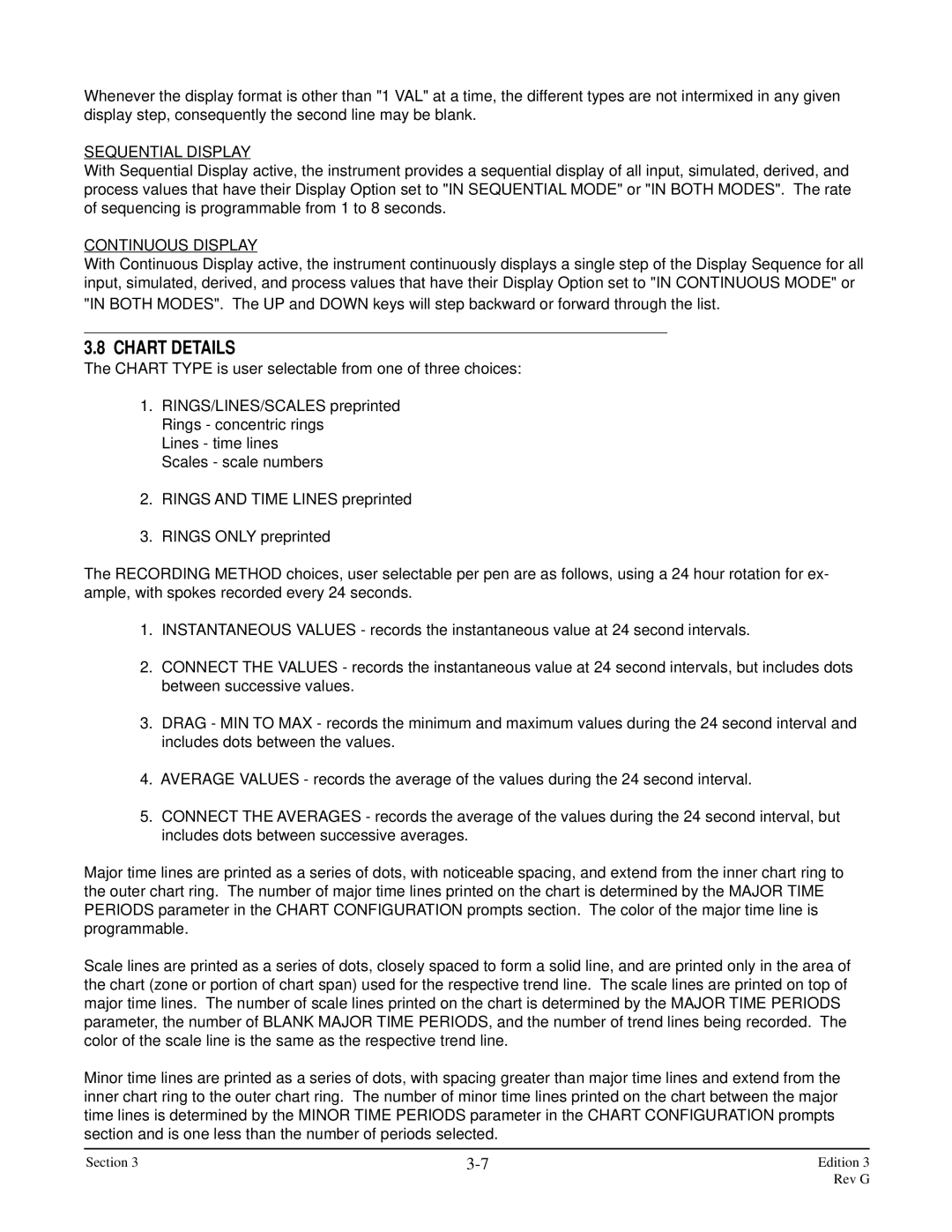
Whenever the display format is other than "1 VAL" at a time, the different types are not intermixed in any given display step, consequently the second line may be blank.
SEQUENTIAL DISPLAY
With Sequential Display active, the instrument provides a sequential display of all input, simulated, derived, and process values that have their Display Option set to "IN SEQUENTIAL MODE" or "IN BOTH MODES". The rate of sequencing is programmable from 1 to 8 seconds.
CONTINUOUS DISPLAY
With Continuous Display active, the instrument continuously displays a single step of the Display Sequence for all input, simulated, derived, and process values that have their Display Option set to "IN CONTINUOUS MODE" or "IN BOTH MODES". The UP and DOWN keys will step backward or forward through the list.
3.8 CHART DETAILS
The CHART TYPE is user selectable from one of three choices:
1.RINGS/LINES/SCALES preprinted Rings - concentric rings
Lines - time lines Scales - scale numbers
2.RINGS AND TIME LINES preprinted
3.RINGS ONLY preprinted
The RECORDING METHOD choices, user selectable per pen are as follows, using a 24 hour rotation for ex- ample, with spokes recorded every 24 seconds.
1.INSTANTANEOUS VALUES - records the instantaneous value at 24 second intervals.
2.CONNECT THE VALUES - records the instantaneous value at 24 second intervals, but includes dots between successive values.
3.DRAG - MIN TO MAX - records the minimum and maximum values during the 24 second interval and includes dots between the values.
4.AVERAGE VALUES - records the average of the values during the 24 second interval.
5.CONNECT THE AVERAGES - records the average of the values during the 24 second interval, but includes dots between successive averages.
Major time lines are printed as a series of dots, with noticeable spacing, and extend from the inner chart ring to the outer chart ring. The number of major time lines printed on the chart is determined by the MAJOR TIME PERIODS parameter in the CHART CONFIGURATION prompts section. The color of the major time line is programmable.
Scale lines are printed as a series of dots, closely spaced to form a solid line, and are printed only in the area of the chart (zone or portion of chart span) used for the respective trend line. The scale lines are printed on top of major time lines. The number of scale lines printed on the chart is determined by the MAJOR TIME PERIODS parameter, the number of BLANK MAJOR TIME PERIODS, and the number of trend lines being recorded. The color of the scale line is the same as the respective trend line.
Minor time lines are printed as a series of dots, with spacing greater than major time lines and extend from the inner chart ring to the outer chart ring. The number of minor time lines printed on the chart between the major time lines is determined by the MINOR TIME PERIODS parameter in the CHART CONFIGURATION prompts section and is one less than the number of periods selected.
Section 3 | Edition 3 |
Rev G
